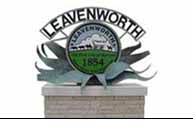History of C.W. Parker
Charles Wallace Parker was born in Griggsville, Illinois
in 1864. His family moved to Abilene, Kansas when Parker
was 5 years old. He grew up in the wild town of Abilene,
the heart of the American Wild West. At the age of 17 he
became interested in the amusement business, and bought a
high striker device to test the strength of the cowboys visiting
Abilene. Later he bought a shooting gallery from Schmeizer
Arms Company of Leavenworth, Kansas. In 1892 Parker bought
a used Armitage/Herschell track machine and operated it until
1894 when he built his own track machine (almost a direct
copy of the Armitage/Herschell) and started the C.W. Parker
factory in Abilene. By 1900 he had traveling carnivals in
the midwest and was expanding rapidly. He built all types
of amusement devices, including the railroad cars to carry
them.
His carousels began to evolve through several style changes.
He went from the track machines to the jumping carousels,
from steam to electric. The carving on the horses began to
get more fanciful. Parker continued to grow. By 1905 Parker
had four full sized carnivals on tour throughout the country.
He also sold equipment to other amusement operators. The
Parker factories in Abilene, were a series of relatively
small buildings that became more and more crowded. He built
more. Eventually some of them began blocking areas that the
city planners had surveyed to be streets. A rift began to
grow between the Parker operations and the Abilene town leaders.
Parker made the decision to move to new quarters in Leavenworth,
Kansas.
Parker began moving to a new factory he was building
in Leavenworth, in 1911. The new building was a much
larger two story brick building located on 4th Street
south of the city center. The factory had 10 railroad
sidings to hold all of the Parker carnival equipment,
and all of the shipments of amusement devices he sent
all over the world.
The Parker "Carry-Us-Alls" (his play on words
for carousel) continued to be the most important part
of the amusement business. He built hundreds of small
traveling carousels that were used by carnivals worldwide.
He also built five large extravagant "park" machines,
designed to be permanently installed in large amusement
parks. Only one of those five is still in existence -
- in Jantzen Beach Mall, in Portland, Oregon.
Opening Day: April 30, 2005
Parker "Carry-Us-Alls" went all over the world.
Parker used to brag that his "machines could be
up and making money, one hour after arriving." His
operations grew every year. He produced new products,
and attractions. He tried to keep all of his shows "family
oriented", with patriotism, apple pie, and motherhood,
as key words in his operations. In general he had a good
reputation, but he was a businessman dedicated to improving
his position in the amusement industry.
About 1914, C.W. Parker began to introduce the new stretched
leg and long bodied shape to the horses on his carousels
that became his best know figures. By 1917 most of the
older designs had been phased out. Most carousels from
then on had a horse called "Lillie Belle" on
every machine produced. Lillie Belle had a bowed head
and wild mane with 3 tendrils of mane pulled across the
neck on the larger machines. It also had a bunch of grapes
on the hip, and originally a lilly and a bell behind
the saddle.
C.W. Parker carvings behind the cantle are some of the
more interesting carvings found on carousel horses. His
standard carvings were hound's heads, roses, tobacco
leaves, bull horns, fish, shields, and ears of corn (from
his Kansas heritage). He some times carved strange creatures
with gnome like features, and large feet, and he went
through a stage about 1906, where he carved dragons,
fish, birds, and exotic women. But the ear of corn behind
the saddle became his best known carving. His horses
were the only ones known that had this carving.
By 1925 the C.W. Parker factory began phasing out the
wooden carved horses, and began creating the aluminum
cast figures. Although they continued to refurbish old
machines with the wooden horses, by 1930 they were casting
all aluminum horses on the carousels.
In 1931, C.W. Parker became ill, and his son Paul began
to take over the operations of the Parker empire. Of
course the world wide depression of the 1930's caused
a major pullback of those operations.
C.W. Parker died in 1932, and was buried in the family
plot in Abilene, Kansas.
by Jerry Reinhardt
|



